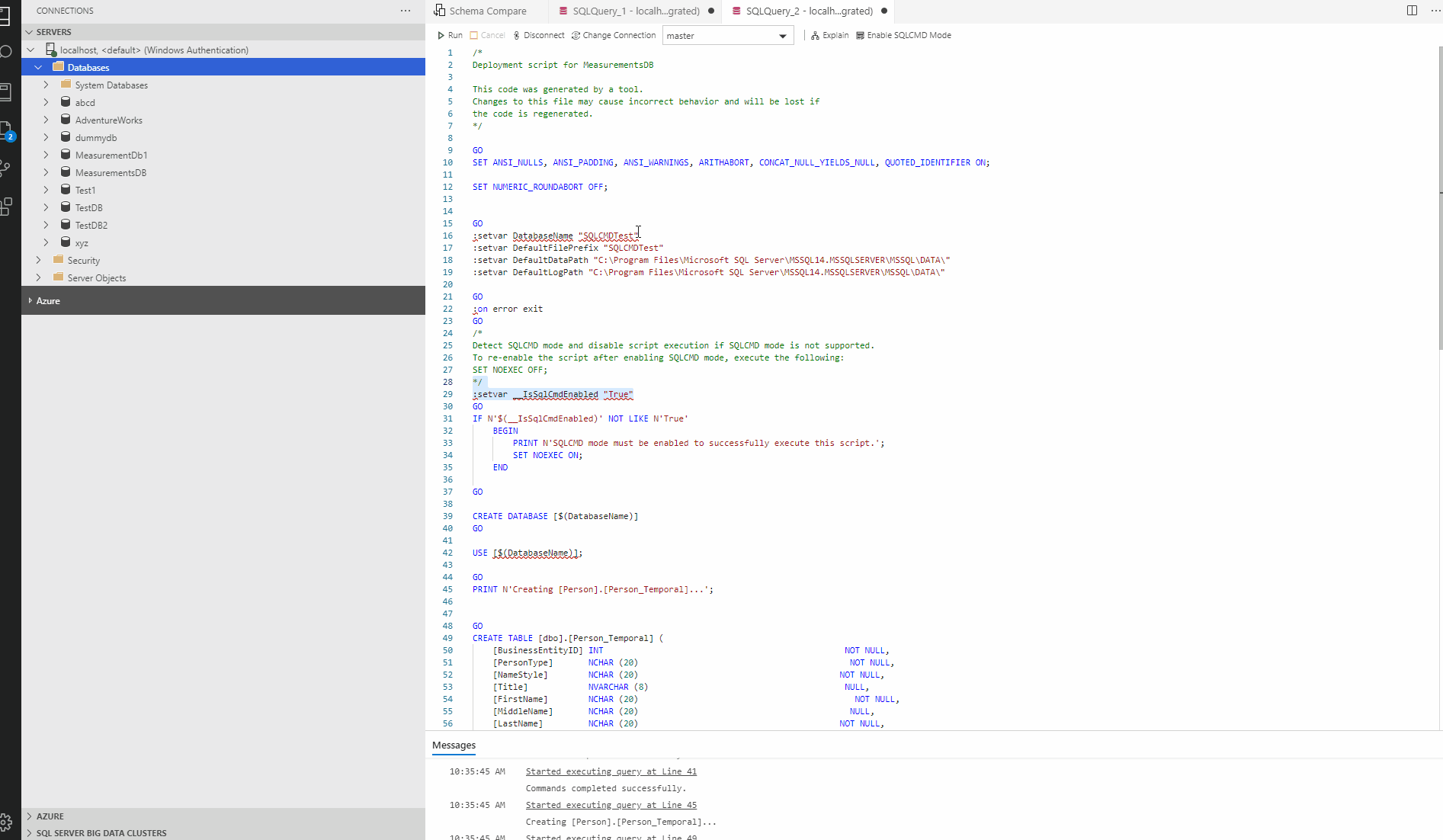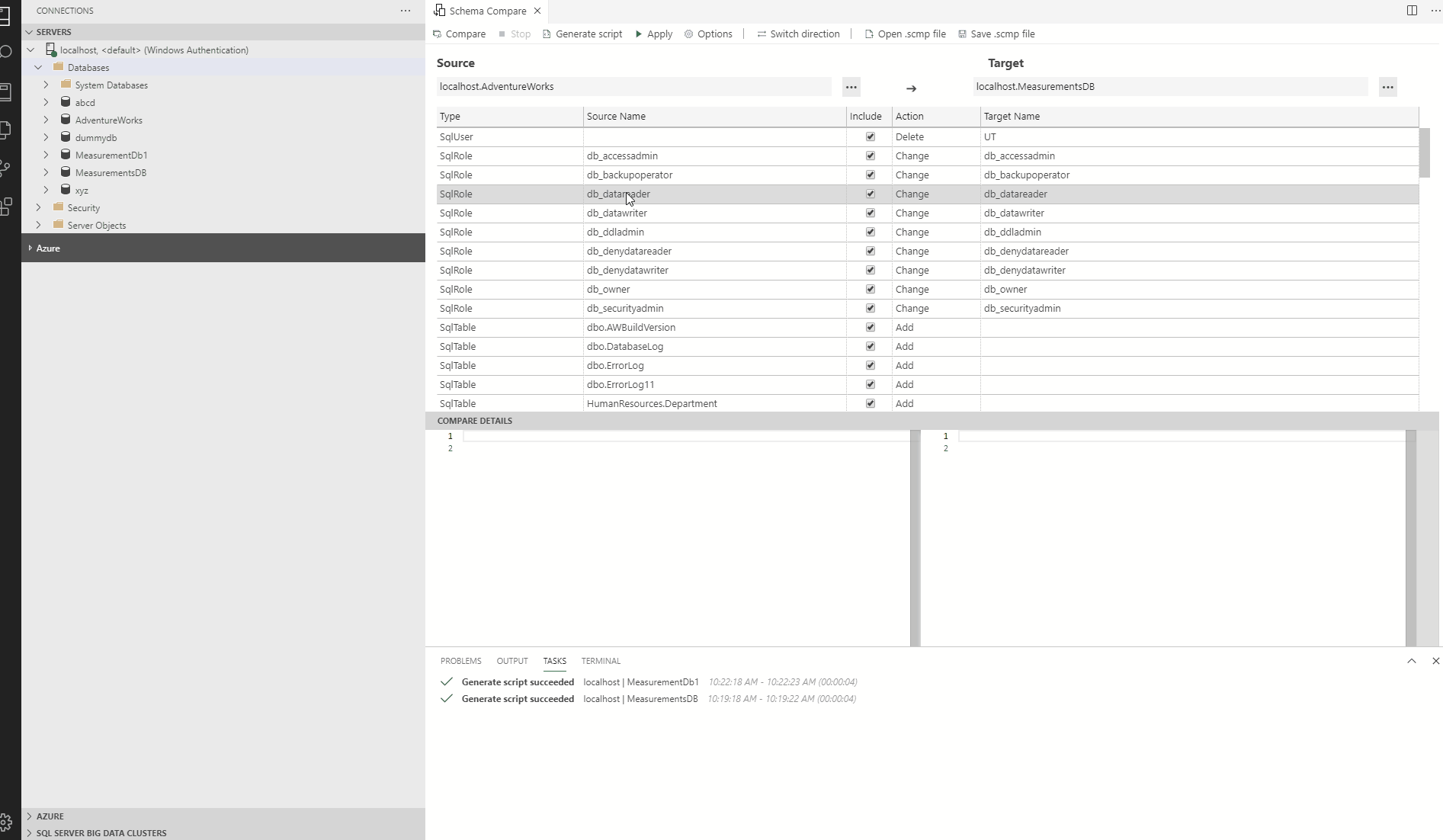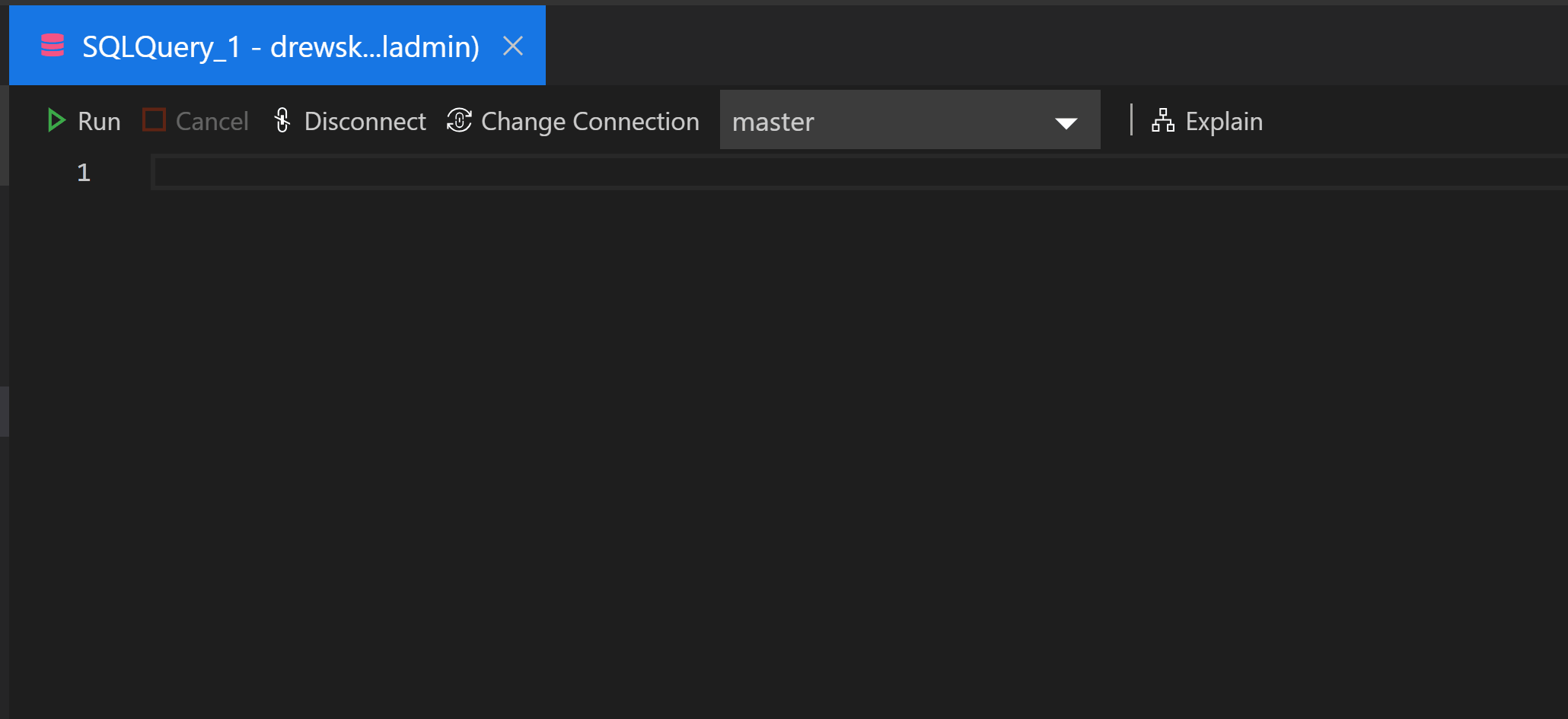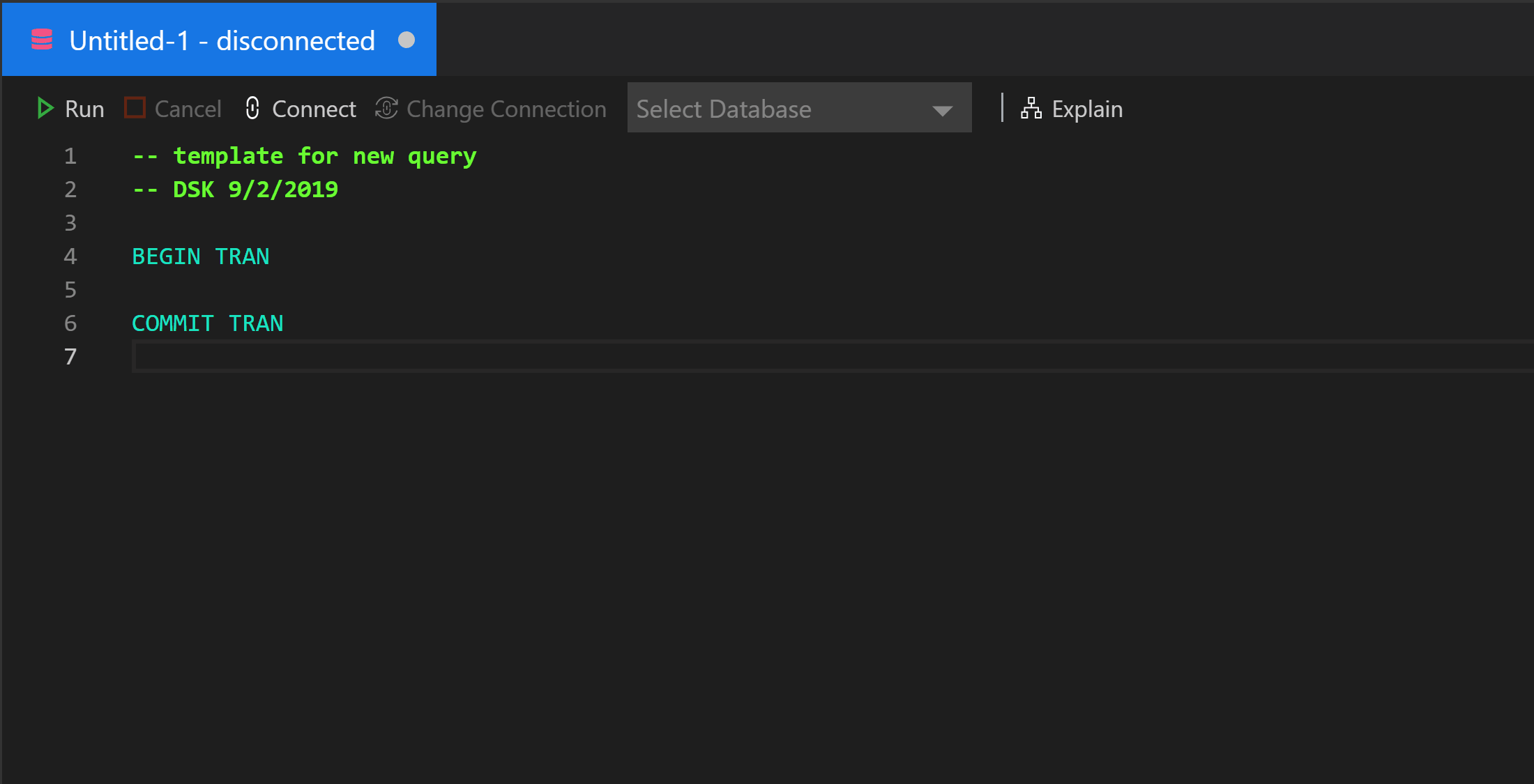The September release of Azure Data Studio is now available
Today we’re announcing the September release of Azure Data Studio (formerly known as SQL Operations Studio) is now available.
Download Azure Data Studio and review the Release notes to get started.
Please note: After downloading Azure Data Studio, click Yes to enabling preview features so that you can use the extensions.
Azure Data Studio is a multi-database, cross-platform desktop environment for data professionals using the family of on-premises and cloud data platforms on Windows, MacOS, and Linux. To learn more, please visit our GitHub.
The key highlights to cover this month include:
- Enabling SQL Server command line (SQLCMD) mode
- Community extension: Query Editor Boost
- Notebook improvements
- Visual Studio Code merge 1.38
- Bug fixes
For a complete list of updates, refer to the Release notes.
SQL Server command line (SQLCMD) mode
As we continue to bring over key features from SQL Server Management Studio, one highly requested feature was enabling SQL Server command line (SQLCMD) mode in our Query Editor. SQLCMD mode allows users to write and edit queries as SQLCMD scripts. In addition, users can also execute the SQLCMD scripts.
This feature is now possible in Azure Data Studio.

In addition, with the release of the Schema Compare extension in Azure Data Studio, users can now output SQLCMD scripts. Having an editing experience in Azure Data Studio helps complete the story where you can output a SQLCMD script, modify, and then execute the SQLCMD script all in a single tool.

To learn more about SQLCMD mode in SQL Server Management Studio, check out our documentation.
Community extension: Query Editor Boost
Thanks to the hard work from Drew Skwiers-Koballa, the Query Editor Boost extension is now available in the Azure Data Studio extensions marketplace.
Query Editor Boost is an open source extension focused on enhancing the Azure Data Studio query editor for users who are frequently writing queries. The extension’s user experience, including snippet creator and a new query template, is constructed to avoid manually editing JSON files. Here are some of the highlights:
Save the current query as a snippet
Creating T-SQL snippets helps improve productivity by quickly generating custom snippets and templates that are highly used. However, tinkering with the JSON can be a painful experience. With this extension, through simple keyboard navigation, you no longer have to tinker with the JSON.

This feature alone is a great reason to download this extension so that you can quickly generate more snippets.
Switch databases using Ctrl+U
To further illustrate improvements in keyboard navigation and accessibility, users can press Ctrl/CMD + U to have a dropdown appear to switch to the database you need.

New query from template
If you find yourself running similar queries each day, you can now override the new query option to a custom template of your choice.

Additional feature requests are welcomed and the development of the Query Editor Boost extension is open to all. You can open any issues or feature requests in the GitHub repository.
Notebook improvements
The focus for the September release for our Notebooks feature was to improve the performance of notebooks. This includes supporting larger notebook files that would have crashed in Azure Data Studio in the past.
A summary of related Notebook performance improvements and bug fixes include:
Let us know of any issues you run into for Notebooks. Many new features will soon be enabled in our daily Insiders build, so keep an eye out this month.
Visual Studio Code August release merge 1.38
As part of our monthly Visual Studio Code merges, we have updated from Visual Studio Code 1.37 to 1.38.
This includes the following changes:
To see the full list of changes, you can check the Visual Studio Code monthly release notes:
Bug fixes
If you would like to help make Azure Data Studio a great product, please share any feedback or report issues through our issues page. Our engineering team regularly goes through the untriaged issues and assigns issues into different monthly milestones so that you know we are working on it. Your votes on issues helps us prioritize.
A full list of bug fixes for the September release can be found here.
Contact us
If you have any feature requests or issues, please submit to our GitHub issues page. For any questions, feel free to comment below or tweet us.
